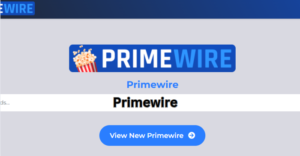Internetchocks – An In-Depth Guide to Maximizing Internet Performance

Introduction
In an era where digital connectivity forms the backbone of both personal and professional life, the term “internetchocks” represents a critical, yet often overlooked, concept. It signifies disruptions or bottlenecks in internet connectivity that can lead to reduced performance, lag, and frustration for users. While this term might not be as commonly known as other technical jargon, its implications are significant, especially as our reliance on seamless internet connectivity grows. This article will explore what internetchocks are, their impact on user experience, how they differ from common internet issues, and strategies to mitigate their effects.
What Are Internetchocks?
Defining Internetchocks
Internetchocks refer to specific disruptions or slowdowns in the internet flow caused by various factors such as network congestion, bandwidth limitations, or hardware issues. Unlike typical internet issues that result from a single point of failure, internetchocks can occur due to a combination of factors that cumulatively degrade the quality of service. They can be sporadic or persistent and can impact everything from streaming video to downloading files or online gaming.
How Internetchocks Affect Your Online Experience
Internetchocks can manifest as buffering, slow loading times, dropped connections, or even total network outages. These disruptions can hinder productivity, disrupt entertainment, and cause significant frustration, especially in high-stakes scenarios like live broadcasts or online gaming competitions. For businesses, internetchocks can translate into lost revenue, reduced customer satisfaction, and compromised operational efficiency.
The Causes of Internetchocks
Network Congestion
One of the primary causes of internetchocks is network congestion. This occurs when too many devices or users attempt to access the same network resources simultaneously. Think of it as a traffic jam on a highway: the more vehicles there are, the slower they move. During peak hours, such as evenings when people stream movies or play games, network congestion can lead to significant slowdowns.
Bandwidth Limitations
Bandwidth refers to the maximum rate at which data can be transmitted over a network. If multiple users are engaging in high-bandwidth activities like streaming HD videos or downloading large files, the available bandwidth can quickly be exhausted, leading to internetchocks.
Hardware and Infrastructure Issues
Outdated or malfunctioning hardware, such as routers, modems, or even cabling, can contribute to internetchocks. Similarly, the quality of the infrastructure provided by the Internet Service Provider (ISP) plays a crucial role. ISPs with outdated infrastructure may struggle to provide stable and high-speed connections, especially during peak usage times.
Software and Configuration Problems
Misconfigured network settings, outdated firmware, or problematic software can also result in internetchocks. Ensuring that all devices and software are up-to-date and correctly configured is essential for optimal internet performance.
Read More: David Bromstad Twin Brother – Unveiling the Truth Behind the Mystery
Internetchocks vs. Common Internet Issues
While internetchocks may seem similar to other internet problems like slow speeds or intermittent connections, they are distinct in their underlying causes and impact. Understanding these differences is key to effectively diagnosing and addressing them.
Internetchocks vs. Slow Internet
Slow internet is often a result of insufficient bandwidth or poor Wi-Fi signal. Internetchocks, on the other hand, are more complex and can occur even when the bandwidth is theoretically sufficient. They are typically caused by congestion, poor routing, or hardware limitations.
Internetchocks vs. Network Outages
Network outages are complete losses of connectivity, often due to ISP issues or severe hardware malfunctions. Internetchocks do not usually lead to complete outages but cause significant slowdowns and performance degradation instead.
Identifying Internetchocks in Your Network
Monitoring Internet Speed and Latency
Regularly monitoring your internet speed and latency can help identify internetchocks. Tools like Speedtest by Ookla or Google’s internet speed test can provide insights into your connection quality. Look for significant drops in speed or spikes in latency, especially during peak usage times.
Analyzing Network Traffic
Using network monitoring tools to analyze traffic can help pinpoint internetchocks. Tools like Wireshark or SolarWinds provide detailed reports on traffic patterns, bandwidth usage, and potential bottlenecks. Identifying which devices or applications are consuming the most bandwidth can help in addressing internetchocks.
Checking for Hardware Issues
Inspect your hardware, including routers, modems, and network cables, for any physical damage or signs of wear and tear. Consider upgrading to more advanced equipment if your current setup is outdated, as newer models often come with improved performance capabilities and better traffic management.
Strategies to Mitigate Internetchocks

Upgrading Your Internet Plan
If your current internet plan offers limited bandwidth, consider upgrading to a higher-tier plan. Many ISPs offer different packages that provide increased speeds and bandwidth, which can help reduce internetchocks, especially in households with multiple users.
Optimizing Network Configuration
Ensure that your network settings are optimized for performance. This includes enabling Quality of Service (QoS) settings on your router, which prioritizes critical traffic like video calls or gaming over less time-sensitive data like downloads. Additionally, separating devices onto different frequency bands (2.4GHz vs. 5GHz) can help balance the load.
Using Wired Connections
Whenever possible, use wired Ethernet connections instead of Wi-Fi. Wired connections are less prone to interference and can provide more consistent speeds, which helps in minimizing internetchocks.
Investing in Better Hardware
High-quality routers and modems can handle more traffic and offer better performance compared to budget models. Mesh Wi-Fi systems are also a good option for larger homes, as they provide more extensive coverage and reduce dead spots, which are often a cause of internetchocks.
The Role of ISPs in Managing Internetchocks
Understanding ISP Throttling
Some ISPs may intentionally slow down your connection based on your data usage or the type of content you are accessing—a practice known as throttling. If you suspect your ISP is throttling your connection, consider using a VPN to bypass these restrictions, or switch to a provider that does not engage in such practices.
Upgrading ISP Plans
Sometimes, the simplest solution is to upgrade your internet plan. Discuss your needs with your ISP and ensure you are on a plan that can handle your household’s usage, particularly if you have multiple users engaging in high-bandwidth activities.
Advanced Solutions for Reducing Internetchocks
Implementing Traffic Shaping
Traffic shaping is a network management technique that controls the volume of traffic sent into a network to ensure optimal performance. By prioritizing certain types of traffic, such as VoIP or gaming, you can reduce the impact of internetchocks on your network.
Using Content Delivery Networks (CDNs)
For businesses, using CDNs can help mitigate internetchocks. CDNs store copies of your website or content in multiple locations around the world, reducing the distance data needs to travel and thus improving load times and reducing bottlenecks.
Employing Multiple Internet Connections
Using multiple internet connections, either through a dual WAN router or a load balancing system, can provide redundancy and improved performance. This setup ensures that if one connection is congested, traffic can be routed through the other, minimizing the impact of internetchocks.
Read More: Josh Brolin Net Worth – An In-Depth Analysis
Future Trends in Internet Performance and Internetchocks

The Impact of 5G and Beyond
As 5G technology becomes more widespread, we can expect a significant reduction in internetchocks due to its high speeds and low latency. However, the transition period may see new types of disruptions as networks are upgraded and optimized.
AI and Machine Learning in Network Management
Artificial Intelligence (AI) and Machine Learning (ML) are increasingly being used to manage network traffic and predict potential bottlenecks. These technologies can automatically adjust network settings and optimize performance, reducing the likelihood of internetchocks.
Conclusion
Internetchocks represent a nuanced but critical aspect of internet performance that affects both individual users and businesses. Understanding their causes, identifying their presence in your network, and implementing strategies to mitigate them can significantly enhance your online experience. As technology continues to evolve, staying informed about new developments in network management and performance optimization will be key to minimizing internetchocks and maintaining seamless connectivity.
FAQs
- What are internetchocks?
- Internetchocks are disruptions or slowdowns in internet connectivity caused by factors like network congestion, bandwidth limitations, or hardware issues. They differ from common internet issues by their complex and cumulative nature.
- How do internetchocks affect online gaming?
- Internetchocks can cause lag, delays, and disconnections during online gaming, significantly impacting performance and the overall experience.
- Can internetchocks be caused by outdated hardware?
- Yes, outdated routers, modems, or network cables can contribute to internetchocks by failing to handle current internet speeds and traffic efficiently.
- How can I identify internetchocks in my network?
- Use tools like Speedtest for monitoring speed and latency, and network analysis tools like Wireshark to track traffic patterns and identify potential bottlenecks.
- What is the difference between internetchocks and slow internet?
- Slow internet is often due to insufficient bandwidth or poor signal, while internetchocks are caused by more complex issues like congestion or hardware limitations, even with sufficient bandwidth.
- Can using a VPN help reduce internetchocks?
- A VPN can help bypass ISP throttling, which is a form of internetchocks. However, it may not solve issues caused by network congestion or hardware limitations.
- What role do ISPs play in internetchocks?
- ISPs can contribute to internetchocks through throttling or inadequate infrastructure. Upgrading plans or switching providers can help mitigate this.
- Are there advanced solutions to prevent internetchocks?
- Yes, advanced solutions like traffic shaping, using CDNs, and employing multiple internet connections can help reduce internetchocks.
- How does 5G impact internetchocks?
- 5G offers high speeds and low latency, which can significantly reduce internetchocks. However, the transition may introduce new challenges as networks are upgraded.
- What are the future trends in managing internetchocks?
- Future trends include the use of AI and Machine Learning in network management to predict and prevent internetchocks by automatically adjusting settings and optimizing performance.
Read More:





